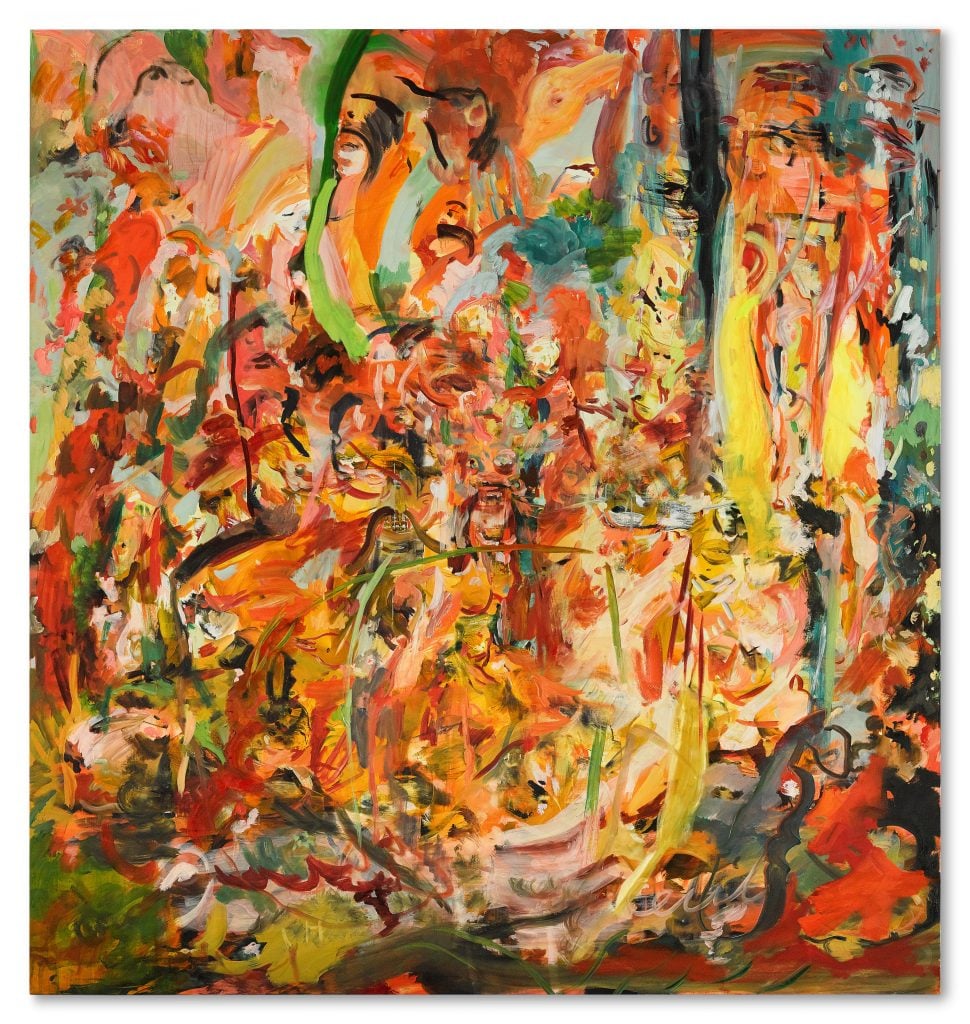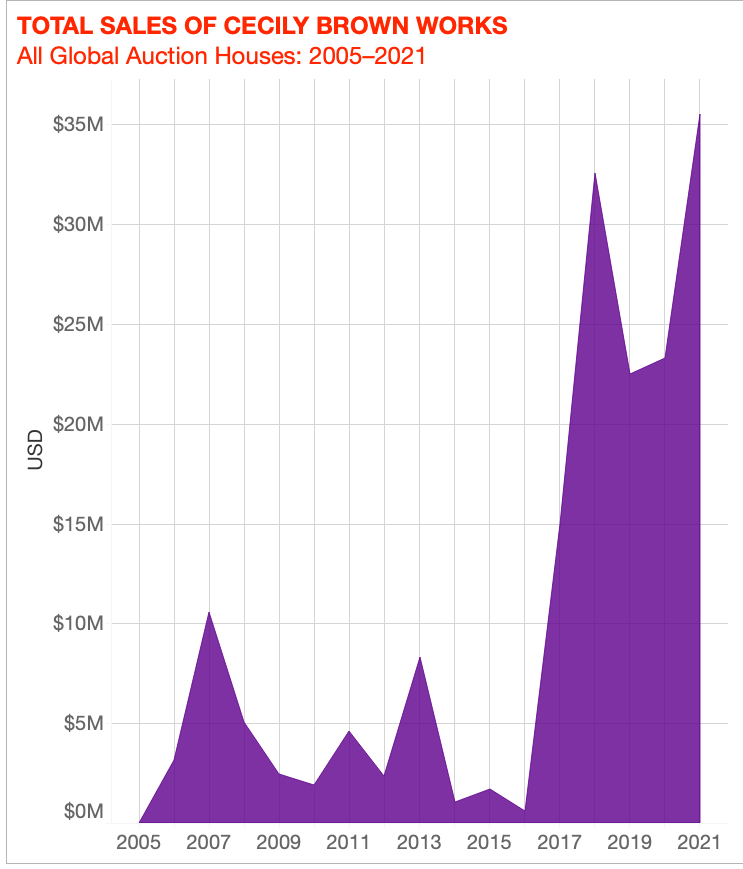The Appraisal
Cecily Brown’s Market Is on Fire. Will This Scandal-Ridden Painting Generate Even More Heat on the Auction Block—or Get Burned?
We took to the Artnet Price Database to assess.

We took to the Artnet Price Database to assess.

Naomi Rea

Those watching Sotheby’s “The Now” auction in London on Wednesday evening might do a double take when Faeriefeller (2019), an orange-hued painting by Cecily Brown, hits the block. The picture is already notorious.
It ignited the year’s biggest art industry scandal so far after Beijing’s X Museum founder Michael Xufu Huang was outed for flipping the work in violation of a resale agreement he had made with Paula Cooper Gallery. Unbeknownst to the gallery, Huang bought the $700,000 painting at Art Basel Miami Beach in 2019 on behalf of his friend, Federico Castro Debernardi, in exchange for a 10 percent commission.
Debernardi turned around and resold the work, which eventually found its way to another collector—who is now selling it at Sotheby’s. The consignor is described in the catalogue as an “Important American Collection.”
The work is estimated to fetch between £2.2 million and £2.8 million ($3 million–$3.8 million), which represents as much as a 442 percent markup from the price Huang paid just over two years ago.
All this is to say that Cecily Brown’s market is hot as blazes right now—in fact, work by the artist appears in all three of the main houses’ London sales this week. So how did we get here? We trace the artist’s 20 years of auction history in Artnet’s Price Database below.
Auction record: $6.8 million, achieved at Sotheby’s New York in May 2018
Cecily Brown’s Performance in 2021
Lots sold: 31
Bought in: 9
Sell-through rate: 77.5 percent
Average sale price: $1.1 million
Mean estimate: $595,700
Total sales: $35.5 million
Top painting price: $6.6 million
Lowest painting price: $400,000
Lowest overall price: $425, for a stamped fine bone china plate, part of an edition of 175 produced by Coalition for the Homeless

© 2022 Artnet Worldwide Corporation.
Despite the somewhat torrid market history, there is a good chance Faeriefeller will find a home during Sotheby’s auction tomorrow afternoon (though as of this writing, the house said the work is not guaranteed).
For one, the players involved in the embarrassment may have an interest in assuring that the work isn’t publicly burned. For another—as the saga with Huang demonstrates—Brown’s art is difficult to access on the primary market.
Collectors might be attracted to the work’s vibrant palette and pulsating brushstrokes, which demonstrate the artist’s distinct blend of abstraction and figuration. There are references both to Richard Dadd’s 19th-century masterpiece The Fairy Feller’s Master-Stroke and, as noted in the catalogue, the 1974 Queen song of the same name. Plus, as Sotheby’s Emma Baker pointed out to Artnet News, the work may be particularly desirable for collectors who prefer to own a less explicit canvas—many of Brown’s other works reference female bodies and carnal scenes.
The artist’s stellar performance at auction in 2021, paired with the market’s desire to correct its historic undervaluation of work by women, only bodes well for her trajectory. As for this particular work, it’s anyone’s guess. But those who enjoy dinner-table gossip may not consider the work’s tawdry history to be a turn off.